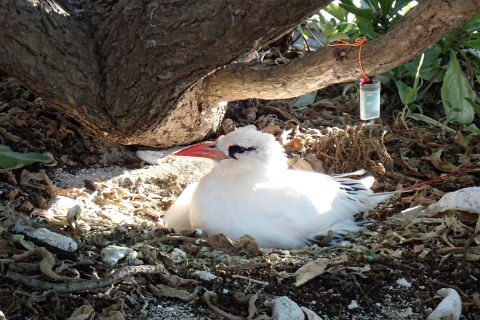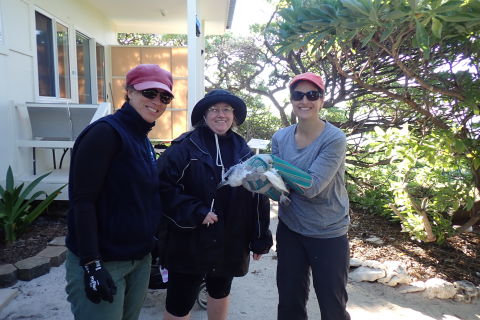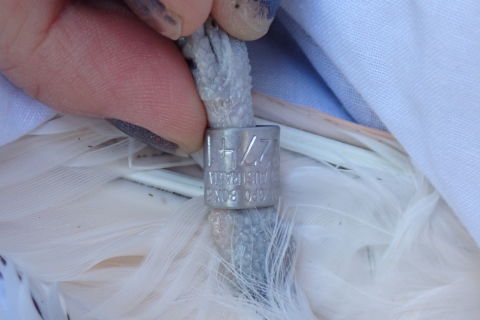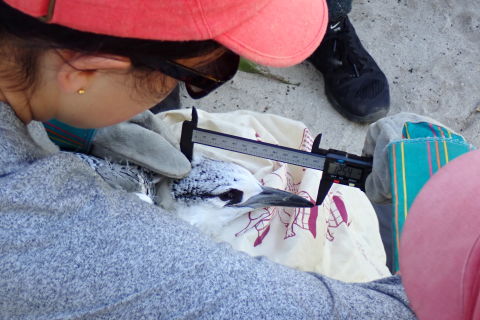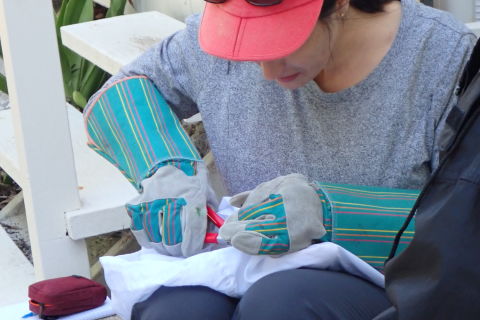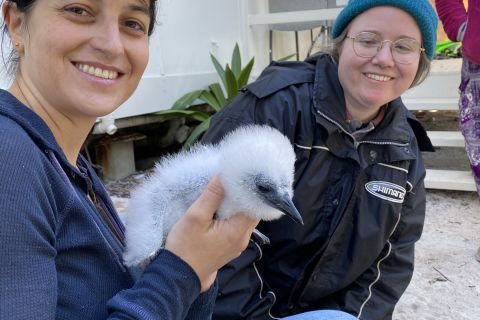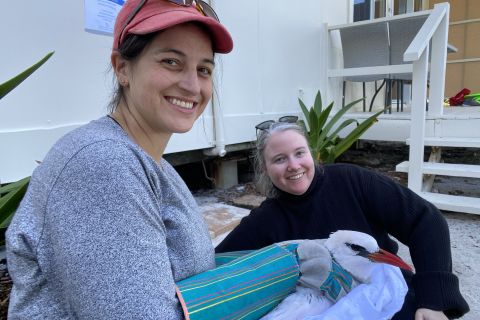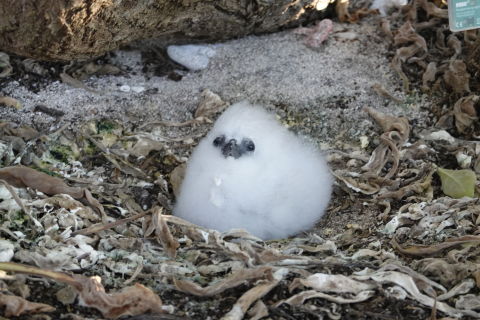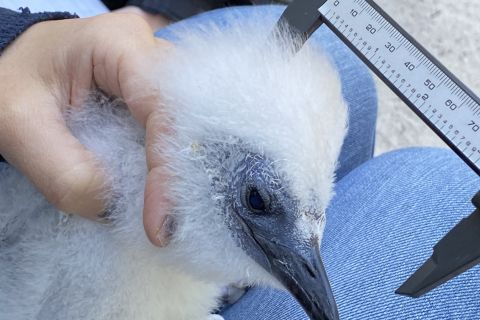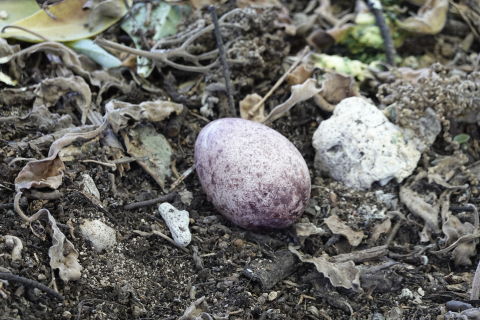News ·
Oldest Red-Tailed Tropicbird found on Lady Elliot Island
Researchers on Lady Elliot Island have found what could be the oldest known breeding individual of one of the world’s most elusive seabirds.
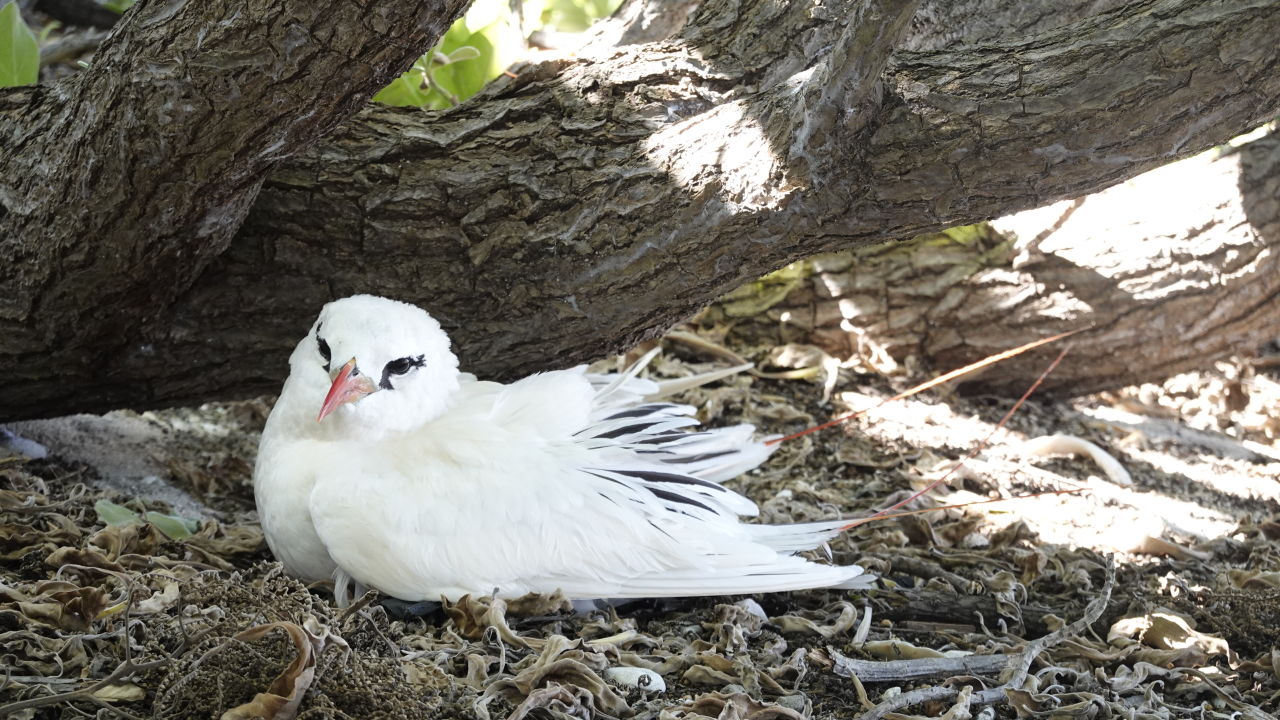
A 23-year-old Red-tailed tropicbird found nesting on Lady Elliot Island, the first site of the Reef Islands Initiative, could be the oldest known breeding individual in the world – discovered by University of Sunshine Coast (USC) scientists recently.
Rarely seen on land, the Red-tailed tropicbird spends most of its life at sea. The endangered seabird species struggles to walk on the ground and only ventures on land to nest and raise its young.
Relatively little is known about this species, which pairs for life and raises a single chick each year.
USC marine biologist Dr Kathy Townsend said it was exciting to find five active nests among Lady Elliot Island’s known breeding colony. “Even more exciting was that as we were tagging these birds, we discovered that a parent of the youngest chick in the nests – a gorgeous fluffy white bird nicknamed Marshmallow – already had a tag,” Dr Townsend said.
Through a little detective work, the research team identified that it was from a Queensland National Parks program from the late 1990s and set about locating the rangers who first tagged the bird.
“Their old records showed it was first tagged as a chick in 1997, which possibly makes it the oldest known active breeding Red-tailed tropicbird in the world,” Dr Townsend said.
The records also revealed that the seabird built a nest on the ground for its chick Marshmallow, within centimetres of where its own parents hatched and cared for it more than 20 years ago!
It seems the Red-tailed tropicbird might share a similar characteristic to marine turtles who also return to the same section of beach each nesting season.
Lady Elliot Island is one of only two islands along the Great Barrier Reef where the vulnerable and rarely-sighted Red-tailed tropicbird nests – the other being Raine Island in the far north.
As part of the Reef Islands initiative, USC’s 'Leaf to Reef: Biodiversity of Lady Elliot Island’ is a collaborative project working to set a benchmark to measure change from local and global climate pressures on habitats and critical reef species, such as the Red-tailed tropicbird.
The next step in understanding more about the Red-tailed Tropicbird is to track its offshore activities to find out what it does while at sea, and how far it travels on feeding journeys.
Researchers plan to re-tag the birds with GPS transmitters when they return to Lady Elliot Island to carry out further research into its marine life, seabirds and coral reef ecosystems.
Pioneered by the Great Barrier Reef Foundation, the Reef Islands Initiative is supported by funding from Lendlease, the Australian Government’s Reef Trust, the Queensland Government and the Fitzgerald Family Foundation.
